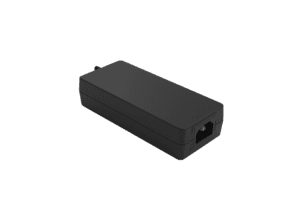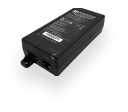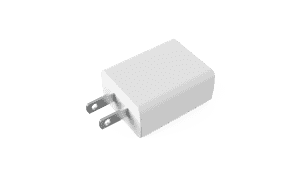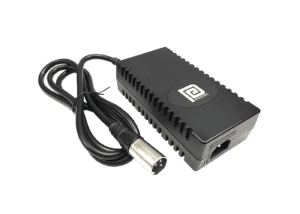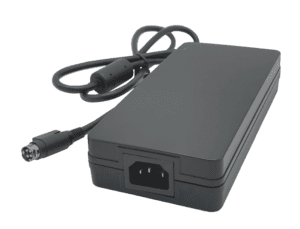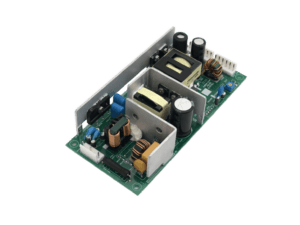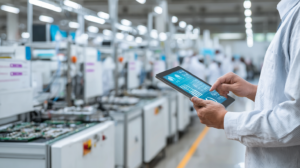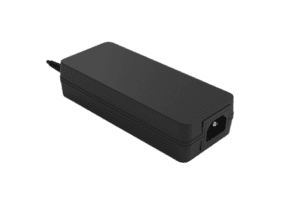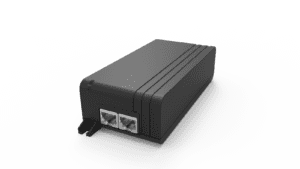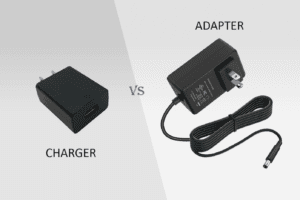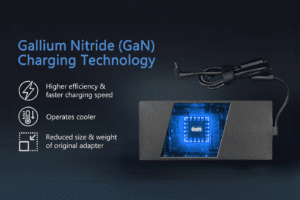BLOG
Swappable Battery vs. Autonomous Docking: What Leading OEMs Are Choosing for Next-Gen Mobile Robots
QUICK LINKS

As mobile robots become more advanced, efficient, and mission-critical across industries—from delivery to security to facility cleaning—OEMs face a pivotal design decision: Should their robots rely on swappable batteries or autonomous docking stations for recharging? Each approach offers distinct advantages and trade-offs, and the choice can significantly impact robot uptime, maintenance workflow, fleet scalability, and total cost of ownership.
In this blog, we’ll explore the pros and cons of swappable battery systems vs. autonomous docking, what top OEMs are choosing for next-generation mobile robots, and how each strategy aligns with real-world deployment environments.
Understanding the Two Approaches to Mobile Robot Charging
At a high level, the debate centers around human intervention vs. fully autonomous charging
- Swappable Battery: A human (or robot-assisted mechanism) physically removes a depleted battery and replaces it with a charged one.
- Autonomous Docking: The robot navigates to a charging dock and connects automatically for power delivery—without human help.
Each system brings advantages depending on application speed, labor availability, environmental access, and deployment scale.
Top Features of Swappable Battery Systems
- Hot-swappable modules with quick-release mechanisms
- Centralized charging racks for idle battery packs
- Human or robotic operator for battery replacement
- Redundant battery availability for uninterrupted operation
Top Features of Autonomous Docking
- Self-guided docking using sensors, beacons, or vision systems
- Integrated AC-DC or DC-DC charging via IP-rated connectors
- Smart charging management with BMS handshaking
- Minimal human intervention and 24/7 uptime support
Choosing the right system means evaluating both technology maturity and field realities.
Pros and Cons of Swappable Battery Systems
Swappable batteries offer fast turnaround and are often preferred in high-demand, short-range deployments. However, they come with logistics and workforce requirements.
Advantages
- Zero charging delay: Immediate power replenishment keeps robots moving
- Centralized energy control: Easy to track battery performance off-robot
- Flexible deployment: No fixed dock infrastructure required
- Ideal for short-shift, high-frequency workloads
Limitations
- Requires manual labor or robotic arms to perform swaps
- High inventory cost for spare batteries
- Wear and tear on connectors and housing from frequent handling
- Not scalable for large fleets without significant human support
Best Practices
- Assign trained staff for swap management in warehouse or field
- Rotate batteries to avoid deep cycles or temperature-related degradation
- Monitor each pack’s health using smart charging racks
- Use RFID or QR tracking to prevent misplacement or mismatch
Swappable batteries are fast—but rely on people or robotic systems for continuous operation.
Related Articles
How to Redesign Robot Charging Stations for Warehouses and Outdoor Deployments
Pros and Cons of Autonomous Docking Systems
Autonomous docking is gaining traction across delivery, cleaning, and security sectors for its hands-free, scalable nature.
Advantages
- Fully automated charging with no human involvement
- Scalable infrastructure supports growing fleets
- Smart charge scheduling based on fleet needs and grid load
- Reduces human error and operational bottlenecks
Limitations
- Longer recharge time compared to battery swaps
- Requires precise navigation and alignment mechanisms
- Initial infrastructure investment for dock installation
- May need environmental prep (curbs, puddles, interference)
Best Practices
- Design robots with auto-alignment sensors (LIDAR, magnetic, vision-based)
- Use IP67-rated charging docks for outdoor/public deployments
- Integrate with AI-powered fleet managers for smart scheduling
- Ensure firmware supports BMS handshakes and auto-disconnect features
Autonomous docking excels when labor is limited, uptime is essential, and scalability is the goal.
CLIENT'S QUOTE
"Phihong’s PoE solutions have made a huge difference for us! Our network runs more efficiently, and we’ve seen real cost savings. We couldn’t be happier!"
What Top OEMs Are Choosing—and Why
Industry leaders are leaning toward autonomous docking for outdoor, large-scale, and public-facing robots, while swappable batteries still dominate in indoor, high-rotation logistics environments.
Trends
- Delivery Robots: Docking stations with smart load balancing in sidewalks and campuses
- Cleaning Robots: Docking systems in malls, airports, hospitals for 24/7 operation
- Warehouse AMRs: Swappable batteries for shift-based or limited-path operations
- Agricultural Robots: Hybrid systems—primary docking with swappable options for emergencies
OEM Preferences
- Autonomous docking is preferred when fleet size exceeds 50+ robots or when operating 24/7 in unpredictable environments
- Battery swapping is preferred where human support is always present and downtime must be near-zero
Best Practices
- Consider hybrid models that allow swappable packs during emergencies, but rely on docking for regular operations
- Survey deployment site for dock placement feasibility (power availability, surface conditions, alignment paths)
- Budget for future-proofing: smart docks can grow with the fleet, while swappable batteries require linear investment in inventory
OEMs are increasingly betting on autonomy, intelligence, and scalability—with autonomous docking leading the charge.
Cost, Maintenance, and Operational Implications
Both approaches carry different upfront and ongoing costs—with docking stations offering better long-term ROI in many urban and commercial use cases.
Swappable Battery Systems
- Lower upfront hardware costs
- High operational labor costs (or investment in robotic arms)
- Frequent maintenance on connectors and battery modules
- Requires secure battery storage infrastructure
Autonomous Docking Systems
- Higher upfront infrastructure cost
- Minimal labor cost post-deployment
- Fewer mechanical failure points
- Easier software integration with AI fleet managers
Recommendations
- Choose swappable if you need fast, manual turnaround
- Choose docking if your goal is autonomous scale and reduced OPEX
The economics often favor docking in public or field applications, and swapping in controlled, human-managed settings.
How Phihong USA Supports Both Charging Approaches
Phihong USA provides power solutions and charging systems to support both autonomous docking and swappable battery architectures. Whether your robot is built for plug-and-charge or hot-swapping, our team delivers:
- IP67/68-rated charging stations with wide-temp AC-DC modules
- BMS-compatible smart chargers for battery management and diagnostics
- High-efficiency power modules optimized for fast recharge
- Engineering support for custom connector design, firmware integration, and compliance
From delivery robots to industrial AMRs, Phihong’s charging systems are built to power fleets of the future—reliably, safely, and at scale.

Contact Our Team Today!
Our dedicated sales team and international partners are prepared to support you with your latest projects and initiatives globally.
Explore More with Phihong USA
As we conclude our exploration of PoE technology, it’s evident how these innovations are streamlining power and data integration across various industries. Phihong USA stands at the forefront of this technological advancement, offering a diverse range of power solutions designed to meet the evolving needs of modern industries.
Phihong USA’s extensive product lineup includes:
- Power over Ethernet (PoE) Solutions: Delivering reliable power and data transmission over a single cable, ideal for simplifying network installations and reducing costs.
- AC/DC Adapters and Power Supplies: From compact adapters to industrial-grade power supplies, Phihong provides solutions that ensure efficiency and reliability in various applications.
- Battery Chargers: Customizable chargers for lithium-ion and lead-acid batteries, supporting a wide range of power requirements for mobility and industrial applications.
- Medical Power Supplies: Specialized power solutions designed to meet the stringent requirements of the healthcare industry, ensuring safety and reliability.
Phihong USA is committed to innovation and excellence, continually developing products that meet the highest standards of performance and reliability. Their global reach and dedication to customer support make them a trusted partner in powering the future.
Here are some useful links to explore Phihong USA’s offerings further and bring in new potential clients:
Visit Phihong USA to discover how their advanced power solutions can support your business needs. Whether you’re looking to upgrade your network, or find reliable power supplies, Phihong USA has you covered.
By choosing Phihong USA, you’re partnering with a leader in power technology, ensuring your operations run smoothly and efficiently with top-tier power solutions. Contact Us today!
FAQ
What are the main differences between swappable batteries and autonomous docking?
Swappable batteries require manual or robotic intervention to replace depleted batteries, offering fast turnaround but high labor or equipment overhead. Autonomous docking allows robots to navigate to a dock and charge themselves, enabling full automation but requiring more charging time and infrastructure setup. Each system is suited for different environments—swappable for short-shift, human-supported zones, and docking for scalable, unattended field operations.
Are swappable battery systems more cost-effective?
Initially, yes—swappable systems require less infrastructure investment. However, they need a large inventory of spare batteries, regular maintenance, and human labor or robotics for swapping. Over time, these costs add up, especially for large fleets. Autonomous docking may have a higher upfront cost, but lower ongoing expenses, making it more cost-effective for fleets over time.
Can autonomous docking and swappable batteries be combined?
Yes, hybrid systems are becoming more common. For example, a robot may default to autonomous docking for daily charging but include swappable battery access for emergency situations or extended use. This combination offers flexibility but increases design complexity and upfront investment. It’s most useful for mission-critical robots in remote or high-demand environments.
Which industries are favoring autonomous docking?
Industries such as last-mile delivery, security patrol, agriculture, and commercial cleaning increasingly favor autonomous docking. These sectors benefit from 24/7 uptime, minimal human oversight, and scalable infrastructure. In contrast, logistics warehouses and fulfillment centers often still prefer swappable batteries due to short shift rotations and onsite human staff.
How does Phihong support OEMs choosing either system?
Phihong USA provides charging technologies for both use cases. For swappable battery systems, we offer smart battery chargers and battery management interfaces. For autonomous docking, we provide IP67 docking stations, AC-DC power modules, and BMS communication integration. Our team helps OEMs determine the best architecture, ensuring safety, reliability, and long-term scalability across industries.

